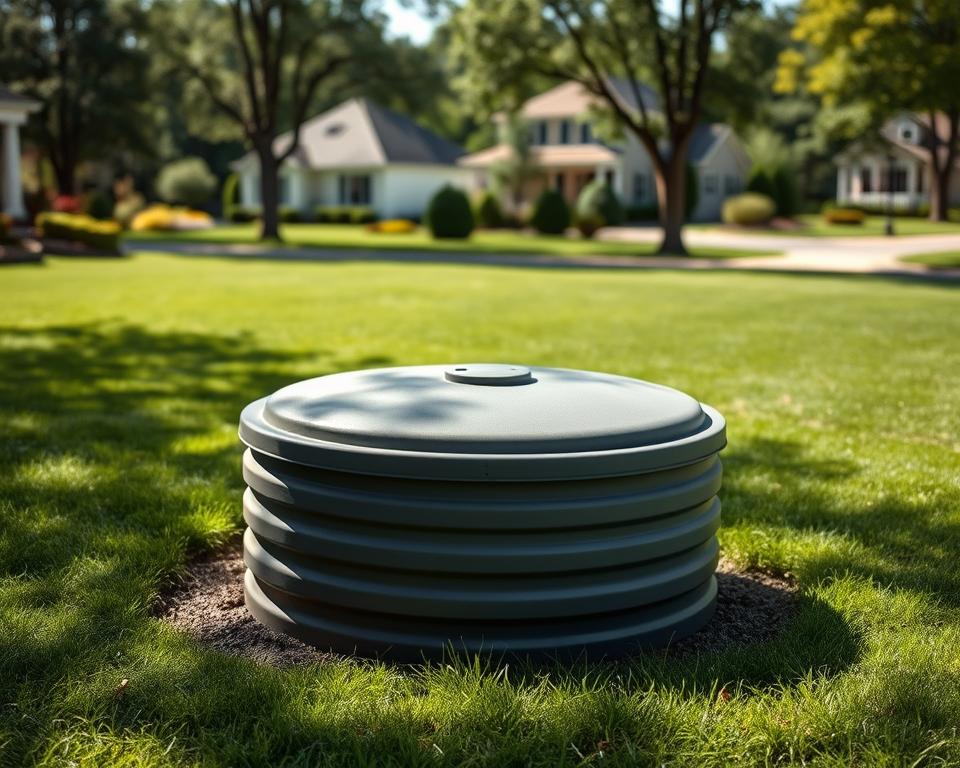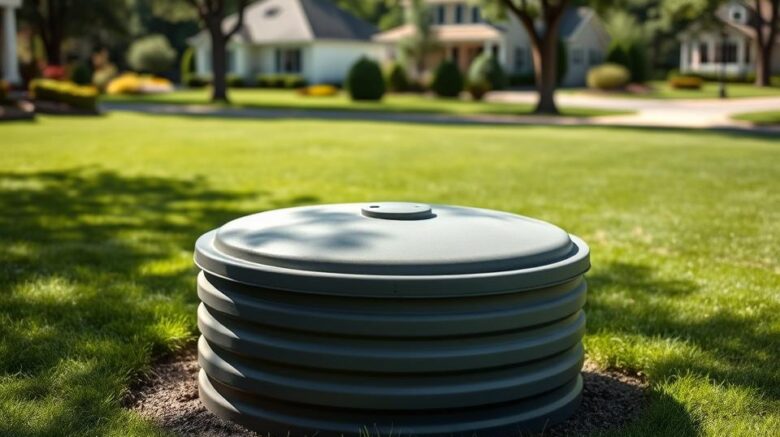Aerobic Tank Air Pump: Complete Guide for Property Owners
Have you ever wondered what powers your aerobic Septic setup’s performance? The Septic tank aerator is the little-known workhorse crucial for your system. With this resource, you will get essential information on the Septic air pump’s importance. It’s key for a robust, effective Septic system.
Knowing the significance of a Septic tank air Pump can boost your Septic system’s operation using septic tank cleaning services near me. It also preserves your property’s value and environmental health. Our handbook will introduce All in Sanitation, a reputable Septic industry leader. They’re eager to fulfil your Septic aerator Pump needs.
Top Highlights
- The Septic air Pump is vital for air-driven Septic tanks.
- Maintaining your Septic system air Pump can boost overall system function.
- Routine inspections extend the service life of your Septic tank air Pump.
- Opting for the correct Septic aerator Pump is necessary for peak operation.
- All in Sanitation offers dedicated services for Septic air Pump support.
Understanding Aerobic Septic Units
Aerobic Septic systems deliver a enhanced waste treatment option by utilizing oxygen. This system features aerobic bacteria thriving in well-oxygenated environments. These bacteria are faster in breaking down organic matter. With the help of Septic aerator Pumps, these systems deliver a constant oxygen supply, improving the waste decomposition process.
These systems perform well in lowering sludge buildup, owing to the activity of aerobic bacteria. This reduction in solid waste means reduced upkeep and tank Pump-outs is necessary. Additionally, they successfully handle wastewater, leading to little to no smell. This ensures a better environment for homeowners and the community together.
To guarantee these systems work properly, it’s crucial to grasp the key Septic system components. These include the Septic tank, oxygenation chamber, and effluent Pump. Each part serves a key function, especially the air Pump. It forces oxygen into the tank, essential for the aerobic bacteria’s activity.
Significance of the Septic Air Pump
The Septic air Pump is central in the running of aerobic Septic systems. It serves as the system’s “lungs,” supplying the vital oxygen required. This oxygen permits aerobic bacteria to flourish and decompose waste effectively. If the Pump stops, the system’s effectiveness drops, bringing about sludge accumulation and possible odors.
Such issues can hamper Septic system operations and create environmental hazards. By realizing how vital the Septic air Pump is, homeowners can take proactive steps. They can maintain its top function through regular maintenance. This avoids failures, reduces costly repairs, and maintains the aerobic system’s well-being.
Major Benefits of Using a Septic Air Pump
Employing a Septic air Pump greatly improves the efficiency of Septic systems. Septic air Pumps are key as they quicken the processing of waste. This is done by oxygenating the treatment process, stimulating aerobic bacteria growth. These bacteria are essential for efficient waste treatment.
They’re also instrumental in reducing foul smells. Because of more active aerobic processes, waste decomposes faster, thus diminishing odors. This makes the environment more pleasant for homeowners.
Another important benefit is the decrease in sludge accumulation. Consequently, tanks require less frequent Pumping, cutting both money and time. Enhanced processing not only lowers bills but also increases the lifespan of the drain field.
Looking after these Pumps diligently means fewer repair costs and complying with regulatory standards. Thus, the upsides of Septic air Pumps aren’t just for homeowners. They also support environmental health by optimizing waste management practices.
| Benefit | Description |
|---|---|
| Fast Waste Breakdown | Heightened aerobic activity quickens the decomposition process. |
| Minimized Odor Emissions | Superior treatment efficacy creates fewer odors. |
| Reduced Sludge Buildup | Fewer Pumping and maintenance are necessary. |
| Extended Drain Field Life | Better treatment equals a healthier drain field. |
| Cost Savings | Lower likelihood of repairs and regulatory compliance cost. |

Picking an Ideal Septic Air Pump
Choosing the proper Septic air Pump is essential for an optimized aerobic system. Homeowners must consider various factors for the best fit. The size of the tank and the airflow demands are important the Pump’s effectiveness.
To make an informed choice, it’s useful to recognize the air Pumps available. There are mainly two types: diaphragm Pumps and rotary vane Pumps. Each comes with specific strengths, which should be paired with your home’s particular demands and usage pattern.
Electric efficiency also matters. Picking a Pump that reduces energy use while delivering the needed airflow can offer meaningful reductions. Assistance from All in Sanitation specialists can be invaluable. They verify the Pump you choose fits your system’s requirements exactly.
Popular Categories of Septic Air Pumps
Homeowners can decide more effectively by being aware of the various Septic air Pumps available. There are mainly two types: diaphragm Pumps and rotary vane Pumps. Each has its unique functions and benefits.
Diaphragm Pumps, famous for their quiet operation, are favored for residential Septic systems. They maintain energy efficiency while supplying consistent airflow. Their constant performance suits smaller systems, appealing to many homeowners.
Rotary vane Pumps, however, are ideal for larger or commercial systems. These Pumps produce more power, essential in handling bigger loads. Their durable build guarantees efficient operation in heavy-duty Septic systems.
| Type of Pump | Best Use | Advantages |
|---|---|---|
| Diaphragm Pumps | Residential Systems | Quiet operation, energy-efficient, reliable air flow |
| Rotary Vane Pumps | Larger or Commercial Systems | Powerful performance, high capacity, durable construction |
Knowing the contrasts in Septic air Pumps is vital for upgrades or replacements. Each Pump type provides specific features to meet various needs. This guarantees top performance for any system.
How to Tell You Need a Septic Air Pump Replacement
Homeowners must be alert to Pump failure signs in their Septic systems. Some indicators point towards the need for a Septic air Pump replacement. These help maintain smooth operation. Noticing these quickly avoids larger issues.
Signs of potential problems include:
- Unusual noises from the Pump, like grinding or shaking, might mean internal damage.
- A clear lack of air output indicates the Pump isn’t operating efficiently, reducing efficiency.
- Repeated electrical problems, such as circuit trips or flickering lights, could indicate overloading.
- Visible damage on the Pump unit, with splits or leaks, requires quick action.
- Unpleasant odors in the yard often indicate a compromised Pump, highlighting ineffective effluent aeration.
Spotting these signs early heads off costly fixes or total system failure. Conducting consistent assessments assists in finding these issues. It also confirms if you ought to have a new Septic air Pump.
Upkeep Advice for Your Septic Air Pump
For an efficient Septic air Pump, regular maintenance is vital. This guarantees that your system runs well. Homeowners can employ several easy-to-follow care strategies for peak results.
Twice a year, carry out a detailed inspection for wear or damage. It is also necessary to renew the filters as recommended. This avoids clogs that could hamper efficiency.
The Pump should be placed on a firm base to lessen vibrations, which could harm it over time. A protective cover is important too. It protects against debris and water, maintaining the Pump’s functionality.
Good upkeep can significantly prolong the life of your Pump. In turn, this benefits the Septic system’s performance collectively.
| Maintenance Task | Frequency | Benefits |
|---|---|---|
| Inspect Pump for damage | Every 6 months | Finds faults promptly |
| Replace filters | As needed | Maintains airflow |
| Check surface stability | Annually | Minimizes shake |
| Clear debris around Pump | Monthly | Stops blockages |
Fitting Your Septic Air Pump
Effective installation of your Septic air Pump is critical for its efficient operation. First, select a secure, moisture-free area for placement. The chosen spot should safely hold the Pump’s weight without issue.
To properly install your Pump on your own, observe the following guidelines:
- Collect all necessary items, including the Pump, a power source, and hose fittings.
- Carefully read the manufacturer’s guidelines before beginning your installation.
- Confirm every connection is tight to avoid air leaks that hurt performance.
- After assembly, conduct a test to ensure the system works as intended.
If the installation process feels tricky, reach out to All in Sanitation. Their professionals can avoid common errors, guaranteeing your setup meets necessary safety requirements.
Why Choose All in Sanitation for Your Septic Air Pump Solutions
When selecting a Septic service provider, the choice is significant. All in Sanitation sets itself by providing dependable Septic air Pumps. They address diverse homeowner requirements with a comprehensive selection of high-grade products. This ensures customers get an perfect match for their Septic systems.
What further defines All in Sanitation is more than their large product lineup. Their focus to outstanding customer service is also noteworthy. Homeowners benefit from expert advice, guiding them towards trusted Septic solutions. This joint effort is crucial to personalize each solution to satisfy specific needs.
All in Sanitation also prioritizes aftercare to guarantee lasting satisfaction. Their dedication reaches beyond the initial sale. They deliver ongoing support to maintain Septic systems functioning optimally for the long haul.
Expense Overview for Septic Air Pumps
Knowing the price factors linked to Septic air Pumps is vital for homeowners with aerobic Septic systems. Up front, one faces the initial cost, which includes the Pump and associated accessories. Installation expenses vary, based on the system’s complexity and any changes required.
Ongoing upkeep forms an additional cost layer. Regular inspections can fend off bigger issues, in the long run yielding savings. Homeowners should plan for Septic maintenance to retain the Pump’s effectiveness and longevity. Such planning helps dodge expensive repairs later on, highlighting the value of proactive maintenance.
| Cost Component | Average Cost Range |
|---|---|
| Septic Air Pump | $500 – $1,200 |
| Installation | $300 – $800 |
| Annual Maintenance | $150 – $400 |
| Potential Repair Costs | $1,000 – $5,000 |
Dividing Septic air Pump expenses into specific parts supports homeowners in cost forecasting. This comprehensive approach ensures the system’s reliable running and their comfort.
Wrapping It Up
For homeowners with aerobic Septic systems, caring for Septic units is essential. The right Septic air Pump enhances waste processing and lengthens your system’s life. Committing to ongoing care and swiftly handling issues sidesteps costly fixes and disruptions.
Opting for a Septic air Pump demands attention. This guide highlighted how to make smart choices about installation and replacement. With All in Sanitation’s expertise, you can handle your Septic systems’ complexities with confidence.
Taking care of your Septic air Pump promotes your system’s operation and durability. It secures a smooth and optimal operation over time. Don’t forget, your home’s wastewater management benefits greatly from consistent upkeep.
